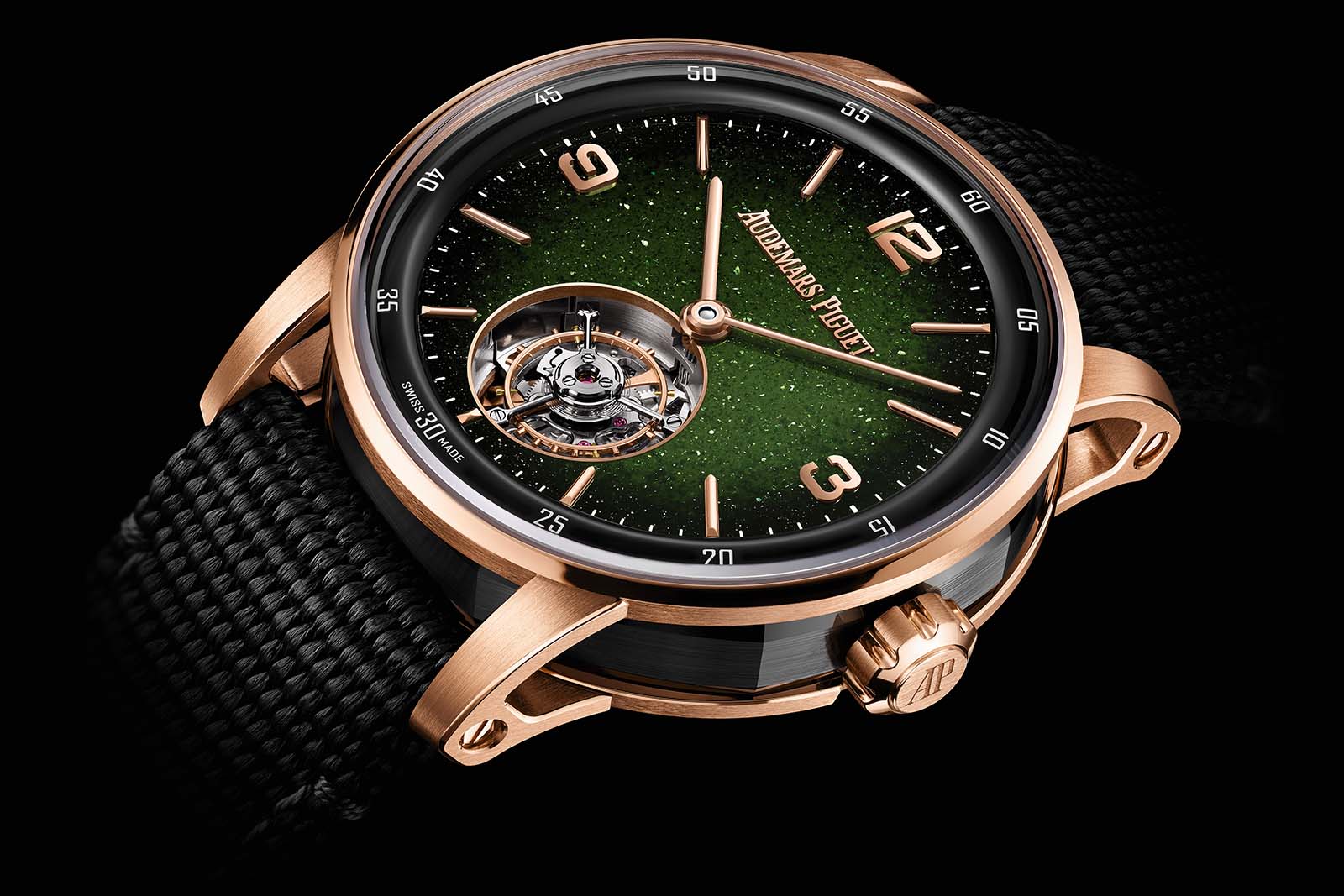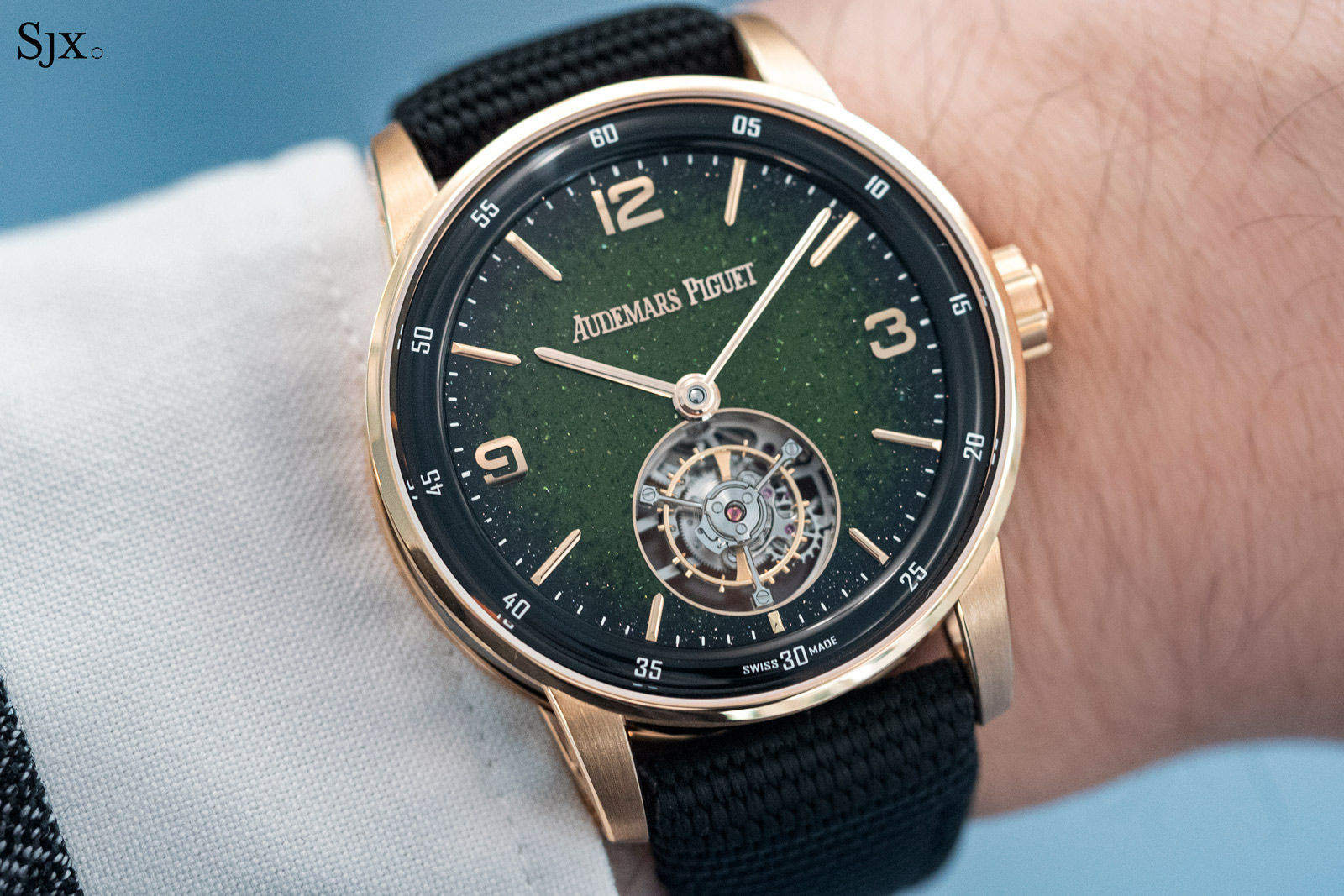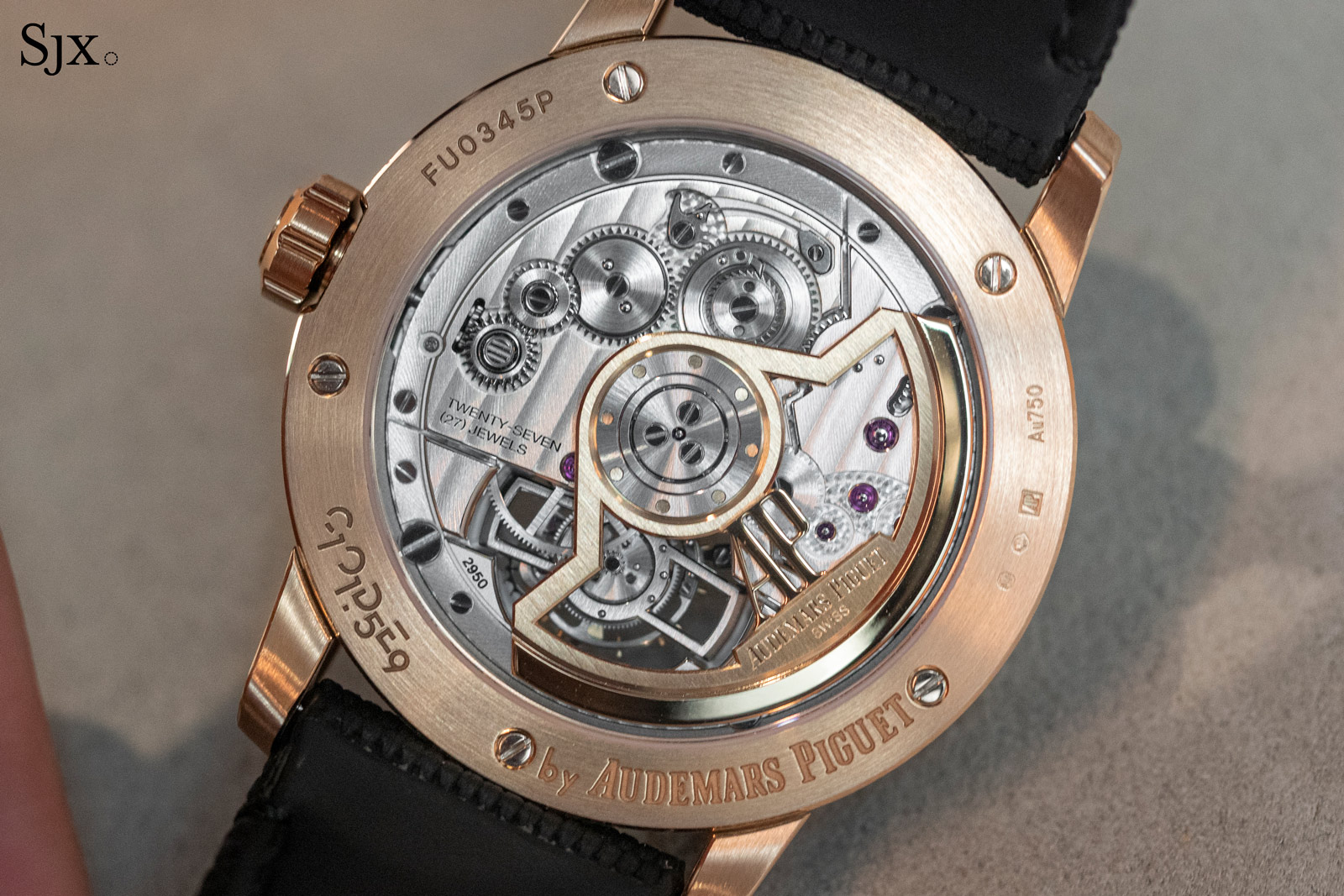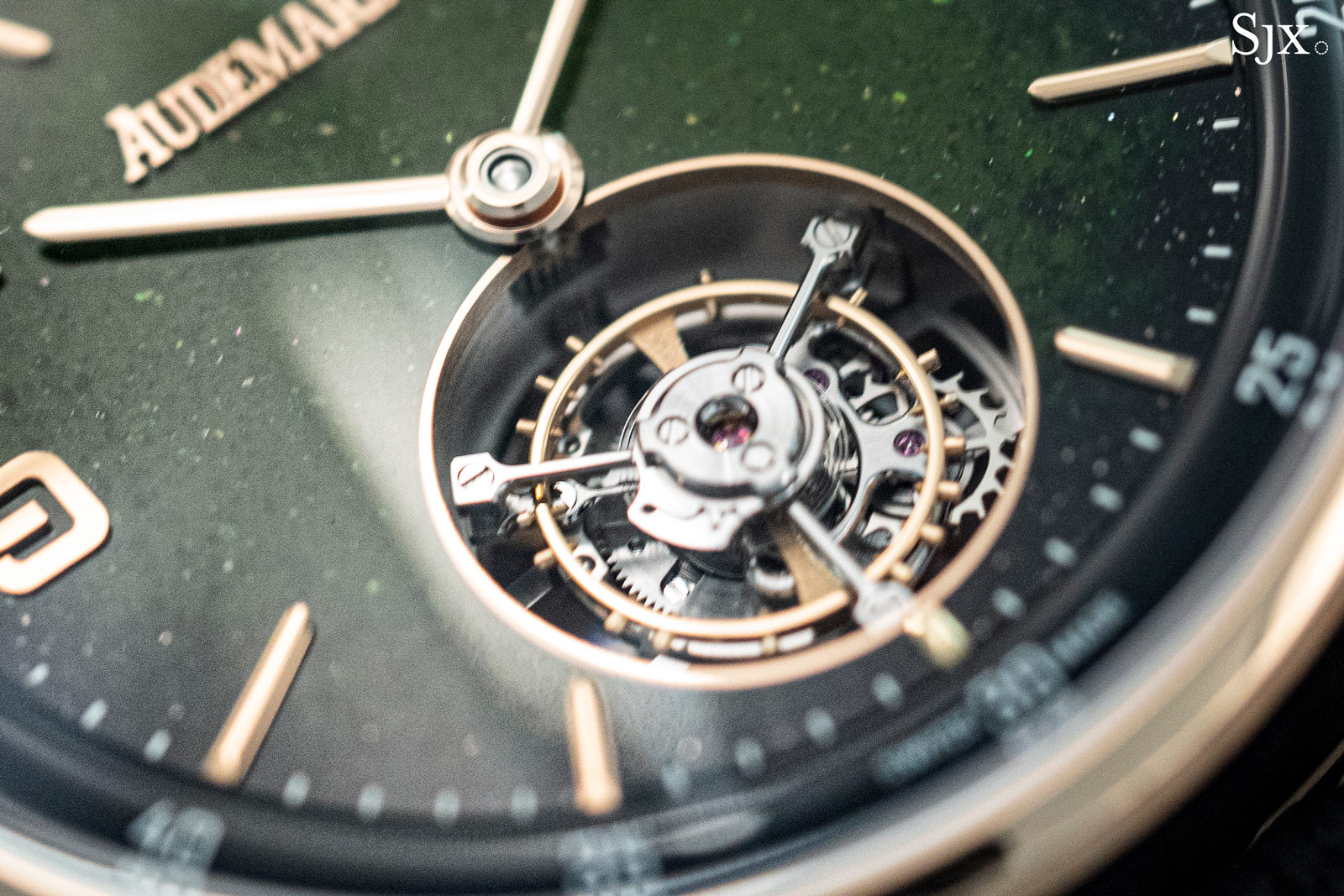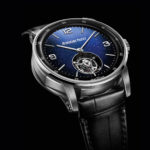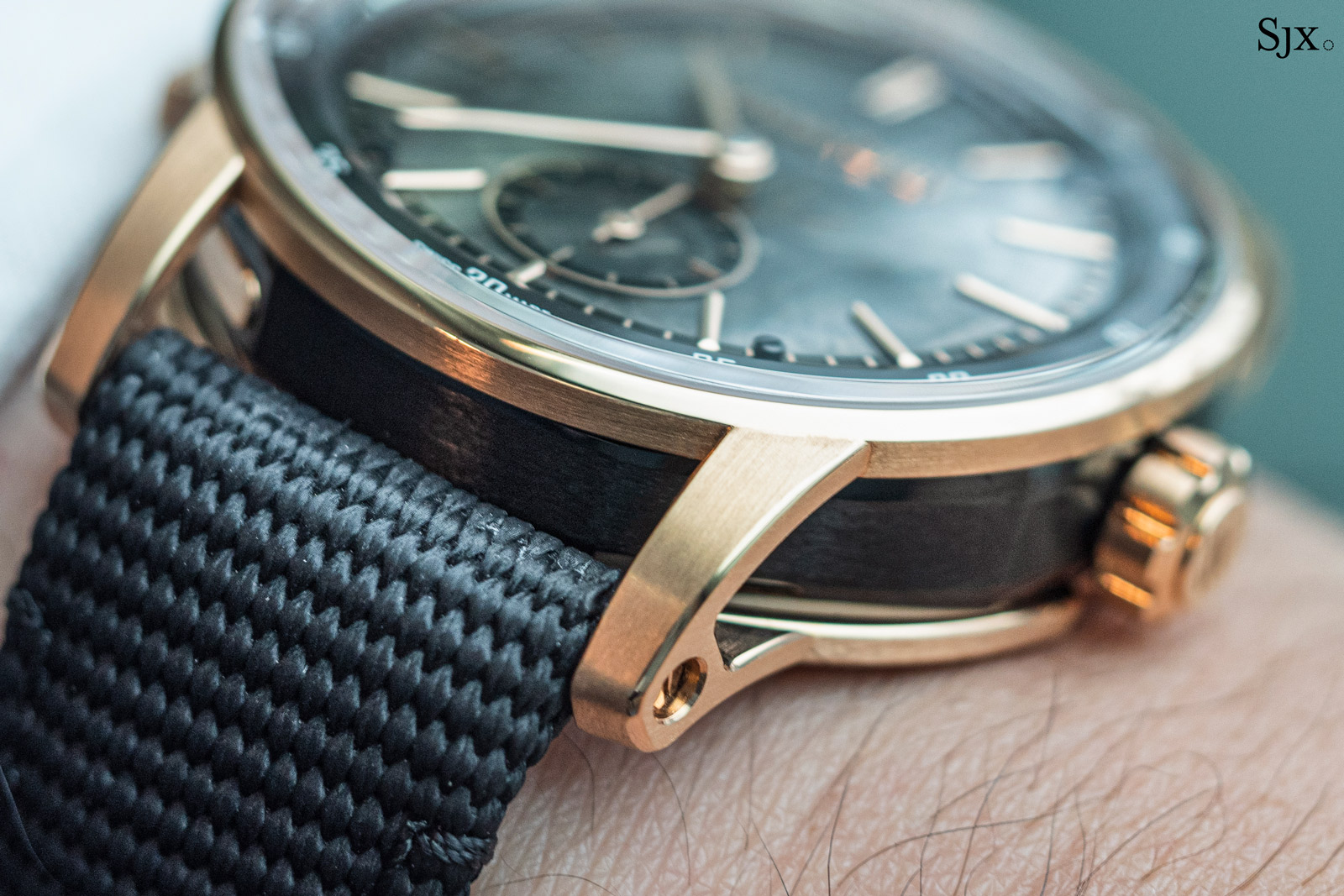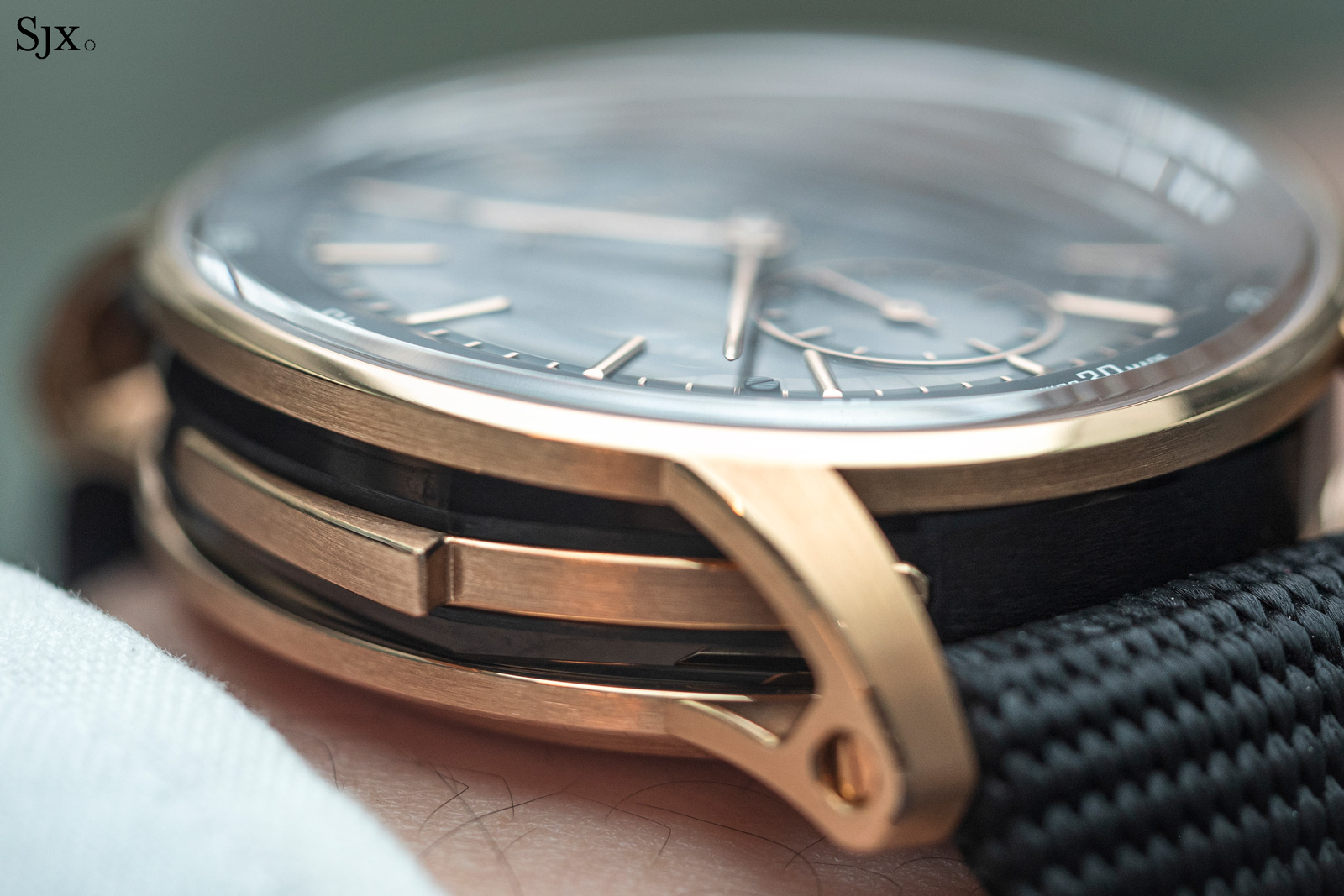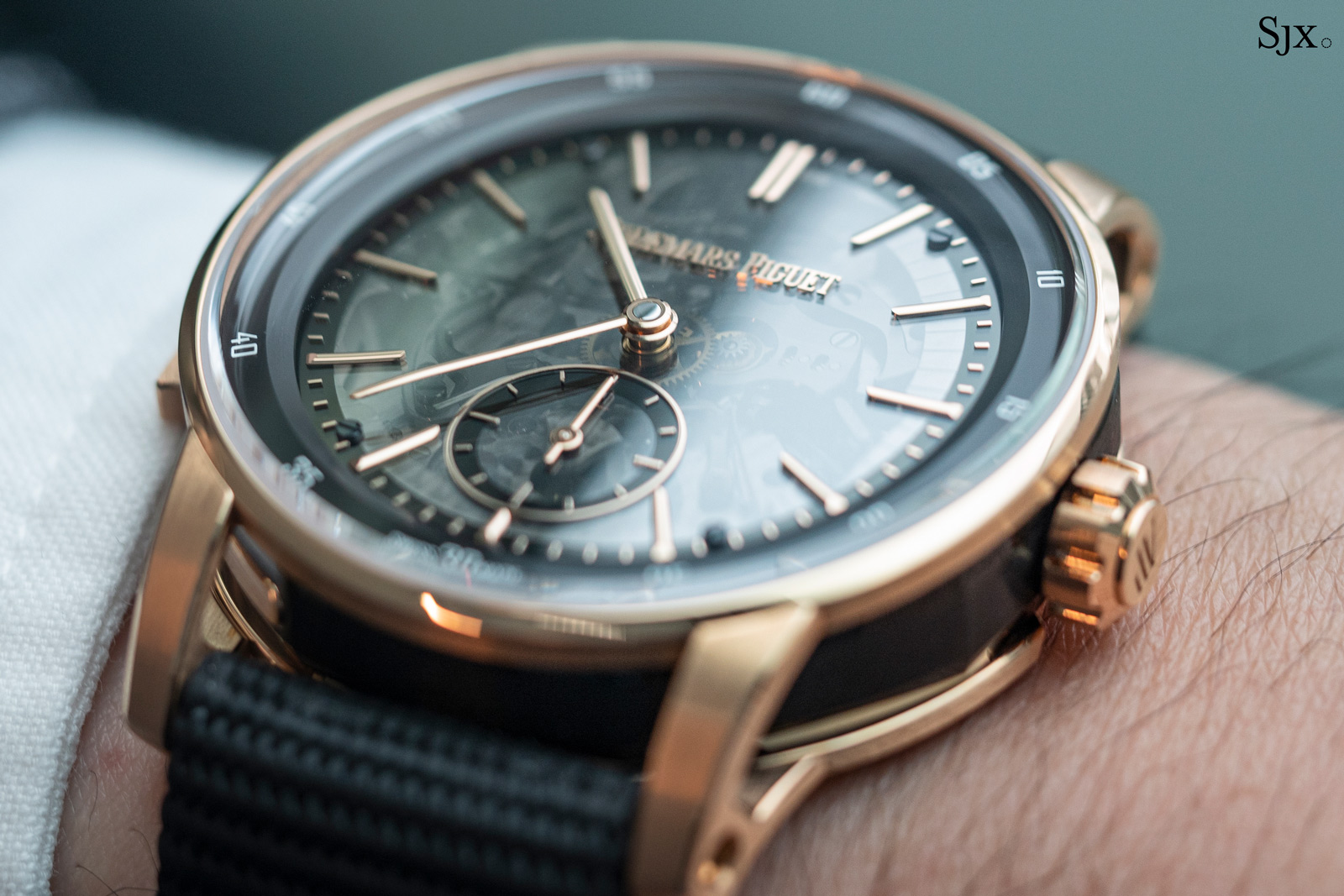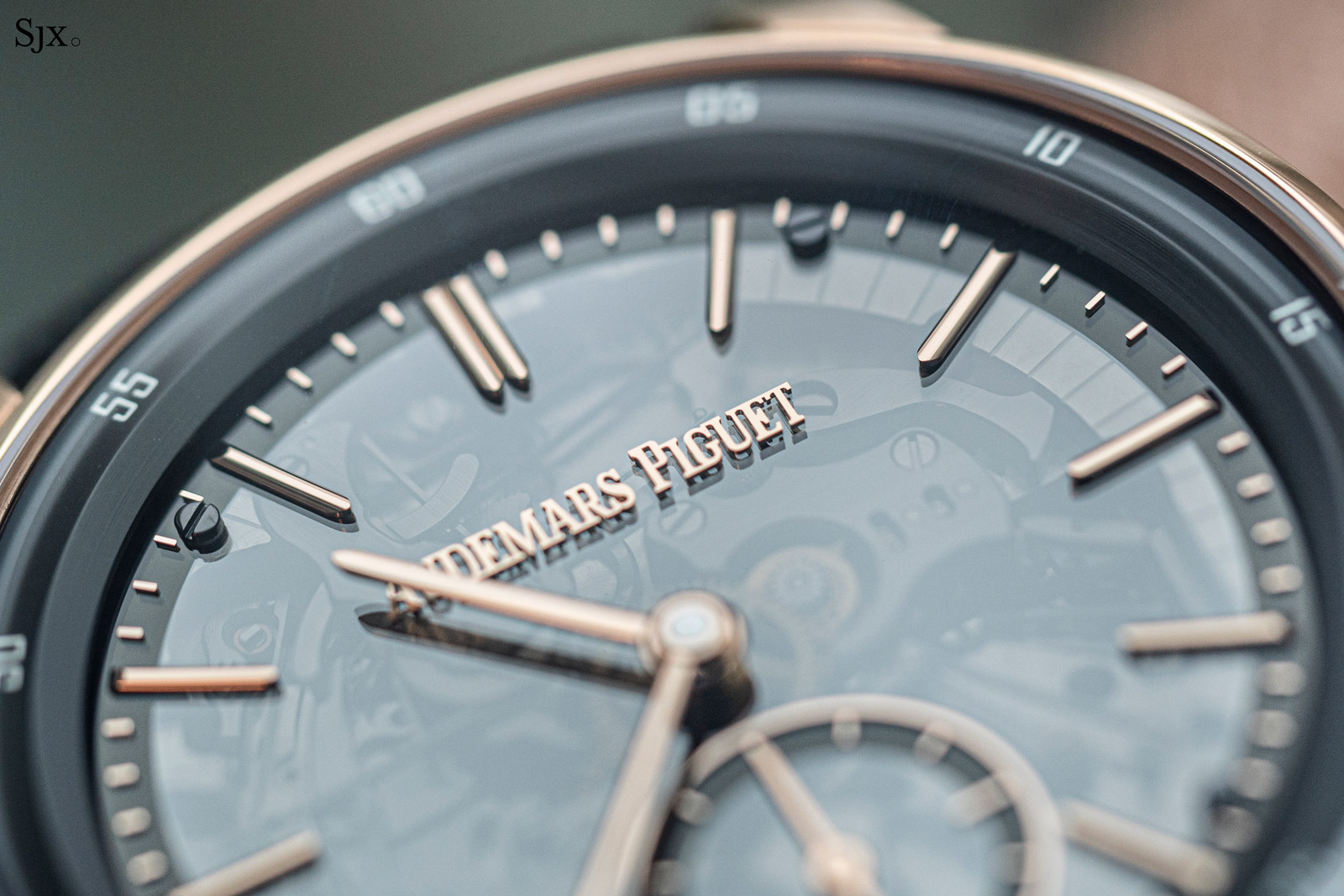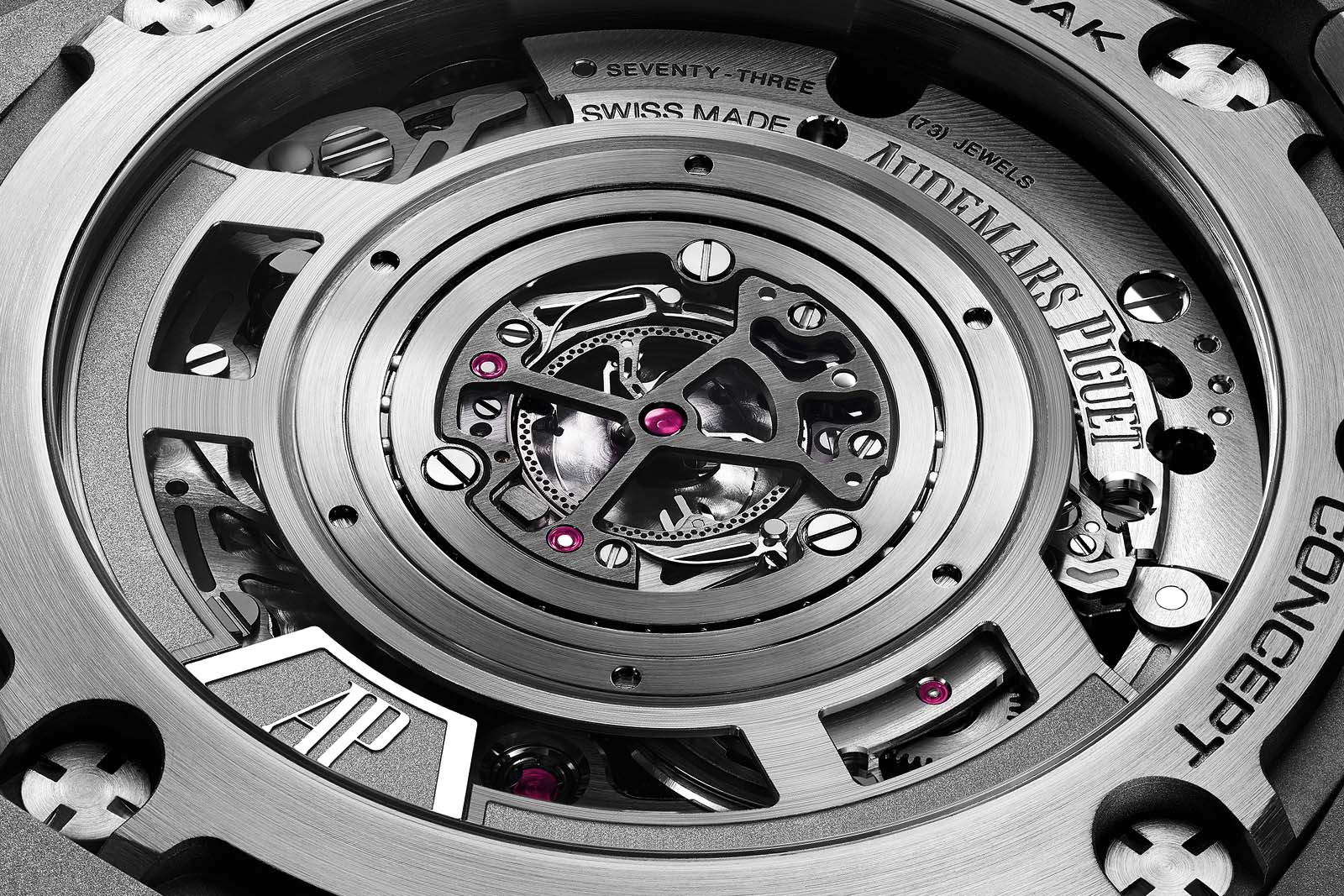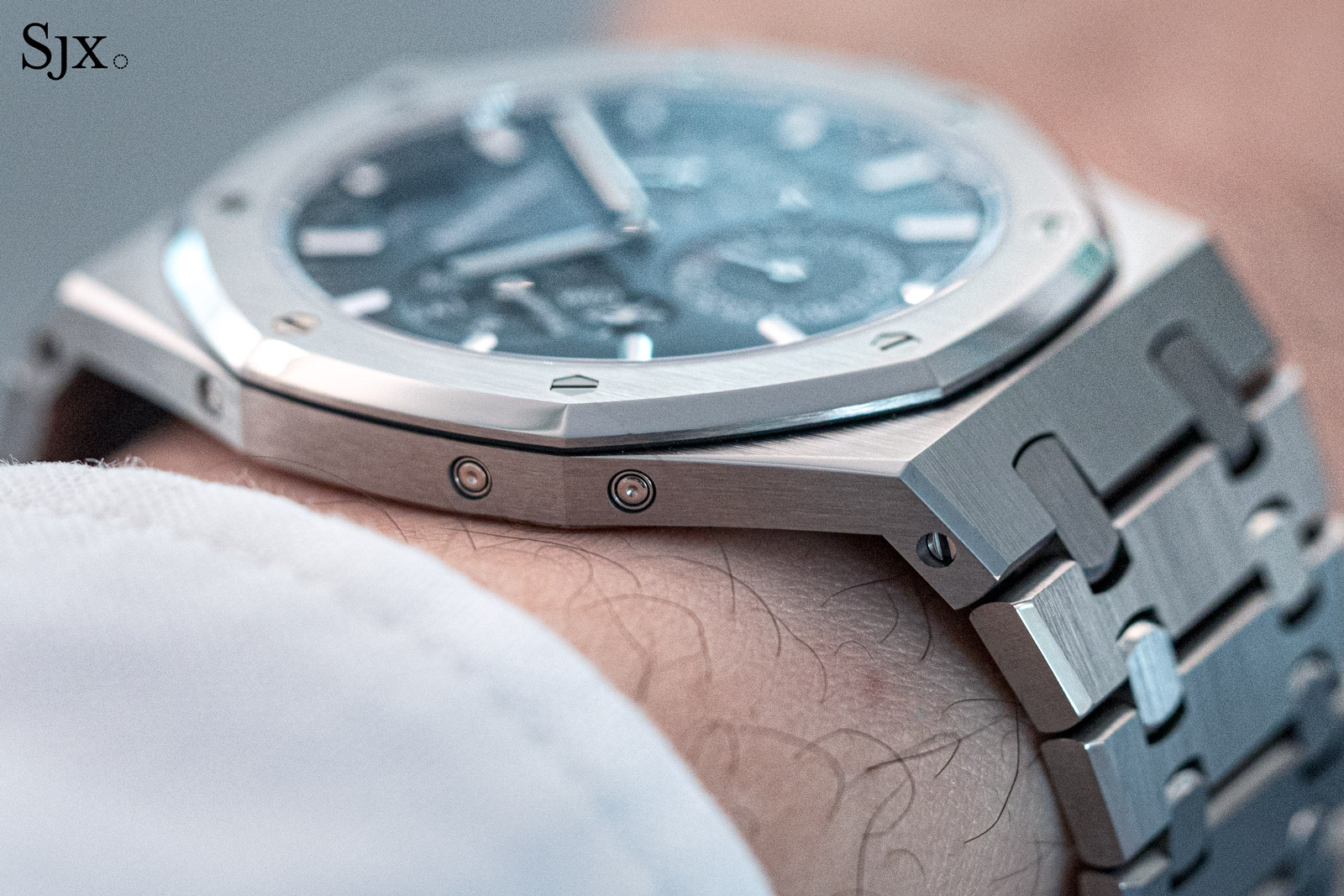Undoubtedly the flagship of its recent new launches, the Code 11.59 by Audemars Piguet Universelle is the brand’s most complicated wristwatch in recent years – or perhaps ever.
A project that began in 2016, the uber-complication rooted in history: it is a tribute to L’Universelle, the grand complication pocket watch from 1899 made by AP for German watchmaker Union. But the watch simultaneously pushes the brand’s modern-day watchmaking to the limit, particularly in terms of miniaturising highly complex mechanisms.
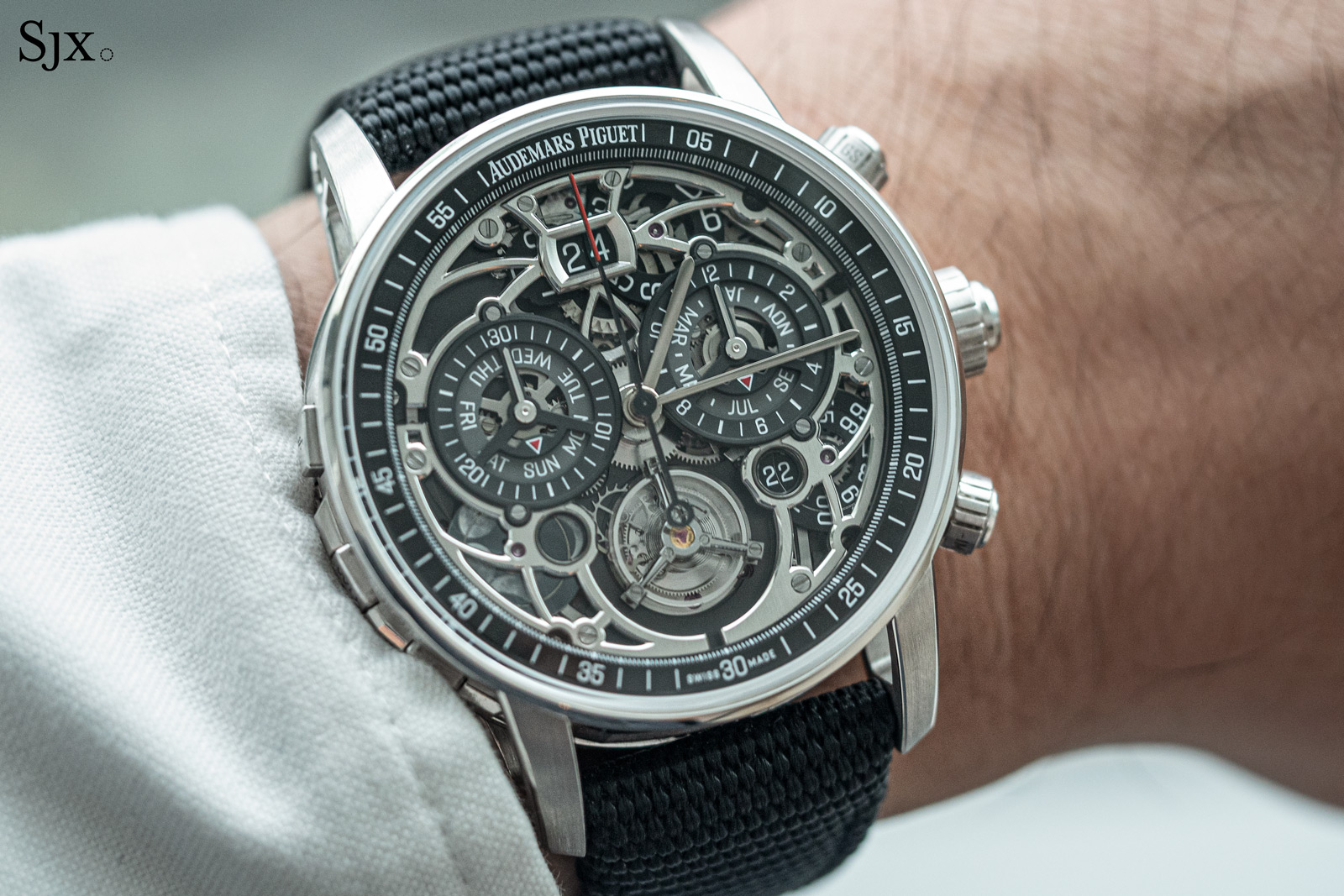
The Universelle is available in two guises, the open dial above and the solid dial pictured further up
Officially one of the brand’s Research and Development timepieces – the model is also known as the RD#4 – the Universelle is an exercise in combining into a single wristwatch all the traditional mechanisms that constitute a grand complication, and then some – perpetual calendar, rattrapante chronograph with flyback, tourbillon, and grande et petite sonnerie with minute repeater.

L’Universelle on display in the Audemars Piguet Museum
Initial thoughts
An assuming name that means little to anyone who doesn’t understand the historical inspiration, Universelle is a horological behemoth that captures AP’s industrial and mechanical capability.
Though it has a highly modern design, the Universelle harks back to a bygone era of high watchmaking that prized highly complicated watches incorporating as many features as feasible into a (barely) wearable package. In today’s market where “hype” watches are prized over all else and repurposed movements feel like more like business decisions than horological creations, the Universelle is a a refreshing and remarkable achievement, especially since it is a grand complication designed from scratch.
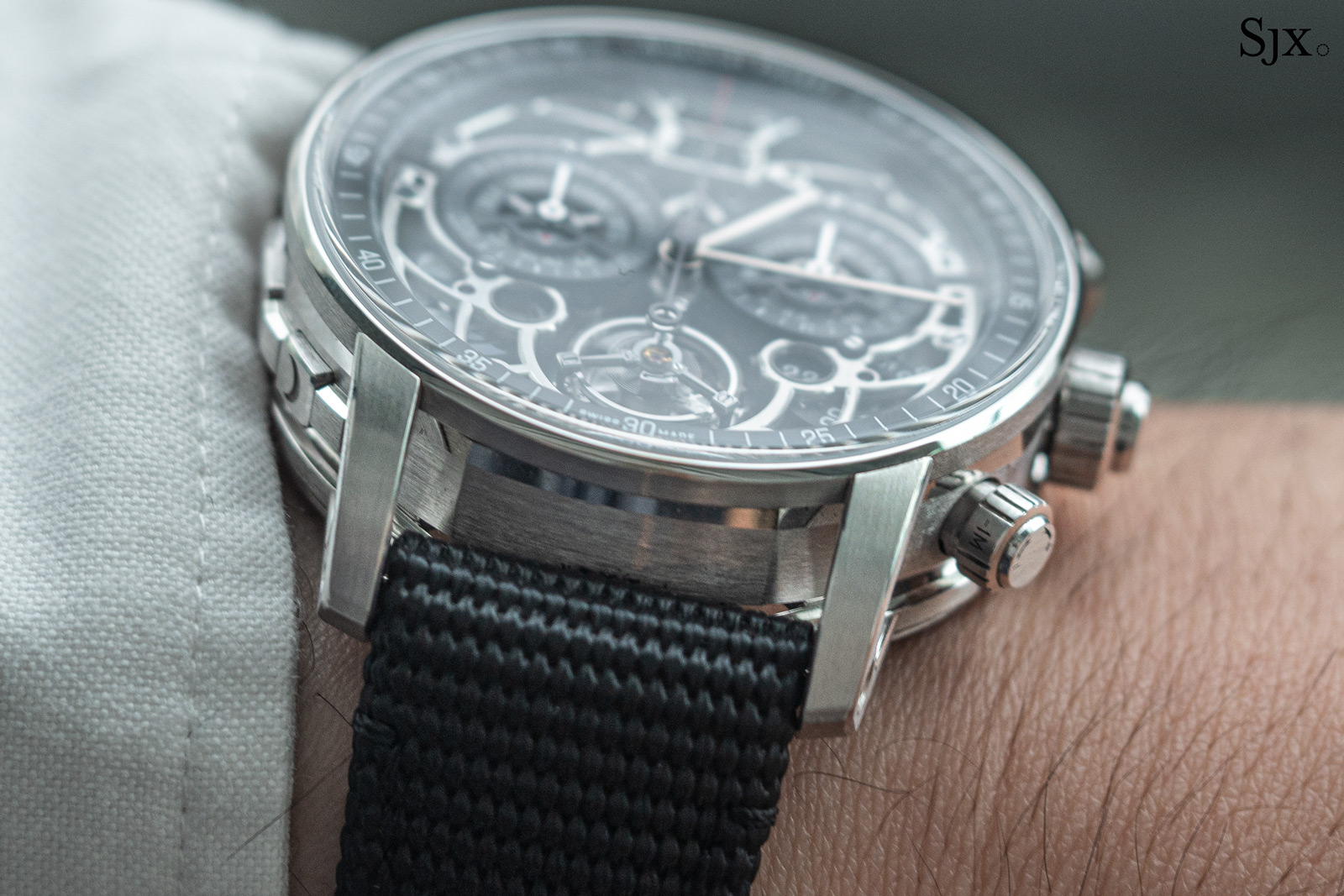
Big but not too big
As impressive as the lengthy roll call of complications inside are its dimensions, the Universelle measures only 42 mm wide and 15.55 mm thick – big but amazingly compact considering everything going on within.
Truly sizeable is the CHF1.45 million price tag for the “base model” with a solid dial. That price and annual output (just seven this year) mean this will be accessible to but a few individuals. But it doesn’t really matter because the Universelle proves that AP is back as a watchmaker of note that is more than its octagonal creation.
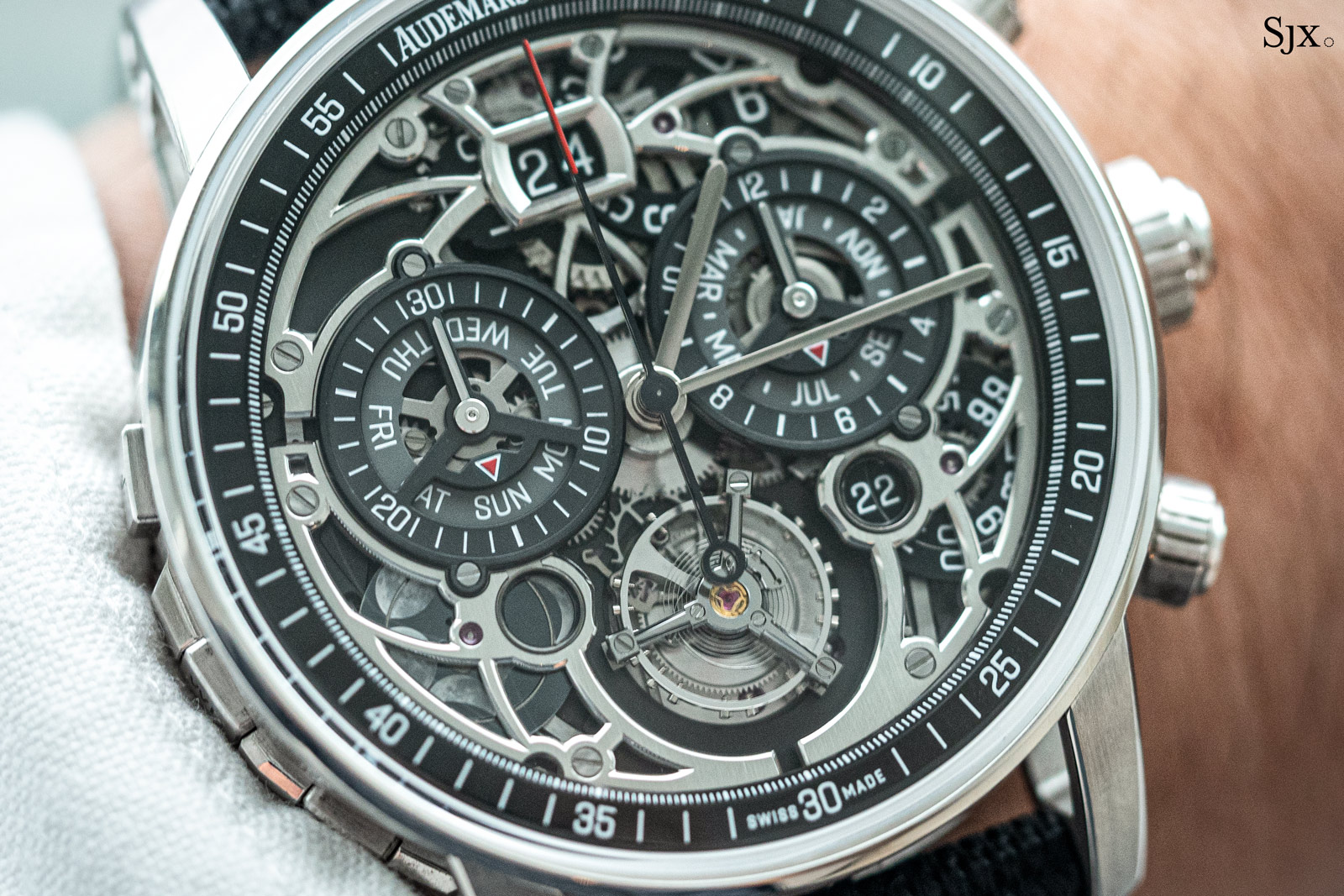
The open-dial Universelle costs CHF1.7 million on account to the additional finishing required for the skeletonised front
Expansive but compact
The Universelle is being launched in four variants, three in white gold and one in pink gold. Two dial styles are on offer: an open-worked dial with bridges that match the case metal and reveal most of the perpetual calendar mechanism, and a more conventional solid dial with a restrained, instrument-like aesthetic. The latter is the discreet option as its relative simplicity belies the mechanical complexity just underneath.

The solid dials (left) and open-worked dials. Image – Audemars Piguet
Counted individually, the Universelle is equipped with 23 complications and a movement made up of 1,155 parts, but manages to cram everything into a 42 mm case that is only 15.55 mm tall. The height is an achievement as the movement is self winding with a full rotor visible through the display back that sits under the hinged, hunter back. One innovation that explains the height is the split-seconds mechanism integrated into an aperture within the rotor – more of that below.
Despite being a highly complicated watch, the Universelle is user friendly, perhaps the easiest watch to adjust and set in the rarefied grand complication sphere. All settings are accessible by hand thanks to good-sized buttons, doing away with the need for tools to activate tiny, recessed pushers.

The hinged back. Image – Audemars Piguet
The three pushers on the right case flank are typical of a split-second chronograph, with start and stop at two and four o’clock respectively, while the rattrapante pusher is integrated into the crown at three o’clock. In fact, both the start and stop pushers are also nested coaxially into separate crowns for added functionality on a single axis – the crown at two o’clock toggles the sonnerie striking mode, the middle is conventional time setting and winding, while the crown at four is for quick adjustment of the perpetual calendar.

The black solid dial variant. Image – Audemars Piguet
Meanwhile, the left flank of the case is surprisingly straightforward and contains only only three pushers – a quickset corrector for the day, another for the moon phase, and most importantly the minute repeater activation pusher. Each of the pushers and crowns on both sides of the case are appropriately labelled with engraved symbols or acronyms to denote their functions, making them almost foolproof.
The practicality of the watch is further boosted by the fact that is both shock resistant and water resistant to 20 m.

The left side of the case with its three pushers. Image – Audemars Piguet
A monumental movement
Of course, the entire point of the Universelle is the movement within – the cal. 1000. The movement stands just 34.3 mm wide and 8.75 mm thick yet manages to check all the boxes that define a classical grand complication, namely a split-seconds chronograph, perpetual calendar, and minute repeater.
However, the cal. 1000 goes several steps further with the addition of a tourbillon, flyback chronograph, automatic winding, and a grande et petite sonnerie – a rare complication even by modern standards. In fact, the only commonplace modern complication that’s not included in the cal. 1000 is probably the a power reserve indicator, a function that is arguably moot given the automatic winding.

The near symmetrical dial. Image – Audemars Piguet
In some ways the cal. 1000 is old school in terms of construction. It is layered like most historical grand compilation movements. The uppermost layer, closest to the crystal, is the perpetual calendar that borrows the innovations that characterise the ultra-thin calendar in the Royal Oak RD#2.
The most notable feature of the calendar the reduction of the 48-tooth calendar programme wheel to a single layer, reducing the height of the calendar module. But the cal. 1000 dials up the complexity of the calendar beyond that of the RD#2 by adding a big date at 12 o’clock, along with a two-digit year indicator at four o’clock.
Below the calendar module is the base movement, which is derived from the family of calibres that include the cal. 4401, the brand’s workhorse chronograph movement. The cal. 1000 naturally is far advanced beyond the cal. 4401 that’s merely a flyback chronograph movement. It adds into the mix a split-seconds chronograph and flying tourbillon, as well as the grande sonnerie that is based on AP’s historical grande sonnerie movement.
One of the key innovations that helped keep the movement as thin as possible is the integration of the rattrapante within the automatic winding mechanism. The rotor is supported by a large central hub that is open in the middle, creating a space for the entire split-seconds mechanism. The same co-axial split-seconds is also found in the just-launched Royal Oak Concept Split-Seconds GMT.

The split-seconds mechanism is visible within the rotor. Image – Audemars Piguet
All of that mechanical complexity is visible below a hinged, hunter back that is actually the outer resonating case back of AP’s Supersonnerie device. It’s essentially a double back that amplifies the chimes of the striking mechanism. In a conventional Supersonnerie the outer back is fixed; here it is hinged but performs the same function.
Key facts and price
Code 11.59 by Audemars Piguet Universelle
Ref. 26398BC.OO.D002CR.01 (white gold, black dial)
Ref. 26398BC.OO.D002CR.04 (white gold, beige dial)
Ref. 26398BC.OO.D002CR.02 (white gold, openworked dial)
Ref. 26398OR.OO.D002CR.01 (pink gold, openworked dial)
Diameter: 42 mm
Height: 15.55 mm
Material: 18k white gold or pink gold
Crystal: Sapphire
Water resistance: 20 m
Movement: Cal. 1000
Functions: Flying tourbillon, big date, moon phase, perpetual calendar, split seconds chronograph, grand sonnerie, minute repeater
Winding: Automatic
Frequency: 21,600 beats per hour (3 Hz)
Power reserve: 64 hours
Strap: Leather strap with matching 18k gold folding clasp
Limited edition: No
Availability: At AP boutiques and AP Houses
Price: CHF1.6 million with open dial; CHF1.45 million with solid dial (prices exclude taxes)
For more, visit Audemarspiguet.com.
Back to top.